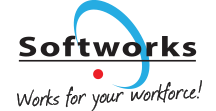Today’s workplace is on the move. Data-driven decision-making is where HR Leaders are putting their attention as they are aiming to enhance employee engagement, optimize operations, and drive organizational success. Workforce Management (WFM) systems play a crucial role in harnessing the power of data, providing insights that inform strategic HR initiatives.
1. Time and Attendance Data
Why It Matters:
Accurate time and attendance data is foundational for effective workforce management. Unplanned absences, lateness, and poor timekeeping can lead to increased labor costs, reduced productivity, compliance risks, and diminished team morale. According to recent studies, unplanned absences can cost businesses as much as $3,600 per hourly employee per year in lost productivity and overtime costs (SHRM, 2024).
How WFM Helps:
Workforce Management systems provide real-time visibility into attendance patterns, lateness trends, and absenteeism—making it easier for HR leaders to spot issues early and address them proactively. Automated alerts, absence tracking, and intelligent scheduling help ensure adequate coverage while minimizing overtime and burnout. Softworks’ WFM solution, for example, allows organizations to monitor unplanned absences across departments, analyze trends, and take strategic action to reduce disruptions and maintain service levels.
2. Scheduling Data
Why It Matters:
Efficient, fair, and transparent scheduling is essential for maintaining productivity, employee satisfaction, and compliance. Manual or outdated scheduling processes often lead to coverage gaps, burnout, and poor work-life balance—especially in industries with variable shifts like healthcare, manufacturing, and retail. According to a 2024 report by Gartner, organizations using automated scheduling tools report a 25% improvement in shift coverage and a 20% increase in employee satisfaction.
How WFM Helps:
Workforce Management systems use real-time data and intelligent algorithms to build optimized, fair, and rule-based schedules automatically. They consider factors like employee availability, skill sets, preferences, and labor laws to ensure the right person is in the right place at the right time.
With intuitive self-service features, employees can view schedules, request changes, or swap shifts—reducing admin time and boosting morale. Softworks’ smart scheduling module enables HR and operational leaders to minimize scheduling conflicts, reduce overtime costs, and improve overall workforce efficiency.
3. Employee Experience and Sentiment Data
Why It Matters:
Employee satisfaction and engagement directly impact productivity and retention. Capturing and analyzing employee sentiment helps HR leaders identify areas for improvement and foster a positive workplace culture.
How WFM Helps:
Modern WFM platforms incorporate tools for collecting feedback through surveys and sentiment analysis. These systems provide dashboards that visualize employee engagement metrics, allowing HR to implement targeted interventions. AI-driven solutions offer real-time sentiment analysis to enhance employee experience strategies.
4. Workforce Allocation and Productivity Data
Why It Matters:
Efficient allocation of human resources ensures optimal productivity and cost-effectiveness. Data on workforce allocation helps in identifying inefficiencies and optimizing task assignments.
How WFM Helps:
WFM platforms utilize predictive analytics to forecast workforce needs and allocate resources accordingly. Decision-aware predictive models, as discussed in recent research, enhance workforce allocation by integrating predictive model selection with optimization processes.
5. Recruitment and Talent Acquisition Data
Why It Matters:
Effective recruitment strategies rely on data to identify the best candidates and streamline hiring processes. Access to comprehensive recruitment data enhances decision-making and reduces time-to-hire.
How WFM Helps:
WFM systems integrate applicant tracking and AI-driven analytics to assess candidate suitability and predict hiring success. Tools like Workday’s AI features for HR professionals exemplify how AI can improve recruiting efficiency and talent mobility.
Integrating Workforce Management for Data-Driven HR
Implementing a robust WFM system is instrumental in accessing and leveraging these critical datasets. Here’s how WFM solutions facilitate data-driven HR practices:
- Centralized Data Management: WFM platforms consolidate data from various HR functions, providing a unified view for analysis and decision-making.
- Real-Time Analytics: Advanced analytics tools within WFM systems offer real-time insights into workforce metrics, enabling proactive HR strategies.
- Compliance and Security: WFM solutions ensure data compliance with regulations and maintain high-security standards to protect sensitive employee information.
- Scalability: As organizations grow, WFM systems scale to accommodate increasing data volumes and complexity, supporting continuous HR optimization.
Conclusion
Access to the right datasets is crucial for HR leaders aiming to navigate the complexities of modern workforce management. By leveraging WFM systems, organizations can harness valuable insights from skill demand forecasting, employee sentiment, career mobility, workforce allocation, and recruitment data. Embracing data-driven HR practices not only enhances operational efficiency but also fosters a dynamic and responsive workplace culture.









